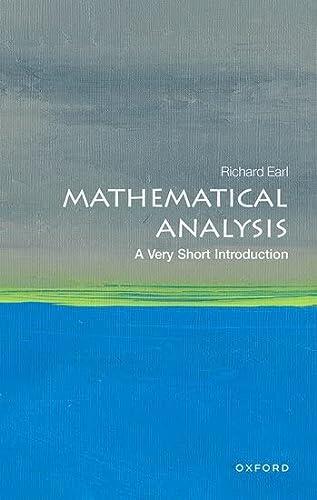
Mathematical Analysis: A Very Short Introduction
توسط
Richard Earl
هنوز رتبهبندی نشده است
Science & Technology
فرمت
جلد نرم
صفحات
224
زبان
انگلیسی
منتشر شده
Sep 22, 2023
ناشر
Oxford University Press
ISBN-10
019886891X
ISBN-13
9780198868910
توضیحات
Richard Earl's exploration into mathematical analysis serves as a compelling entry point for those intrigued by the foundations of mathematics. The succinct nature of this introduction invites readers to grasp not only the essential concepts but also the significance of analysis in various fields. Earl breaks down complex ideas, revealing the beauty and practicality of mathematical thought, making it accessible to both novices and those with some background in mathematics.
Through clear explanations, Earl discusses the critical role that limits, continuity, and convergence play in forming the core of analysis. He emphasizes how these concepts are interwoven into real-world applications, influencing everything from engineering to economics. His approach demystifies often intimidating topics, encouraging readers to appreciate the elegance behind rigorous mathematical reasoning.
Earl also reflects on the historical development of mathematical analysis, providing context that enhances appreciation for the discipline's evolution over time. By tracing the contributions of key figures, he illustrates how foundational concepts were developed and refined, highlighting the interplay between theory and practice.
Overall, this introduction not only informs but also inspires a deeper appreciation for the vast field of mathematical analysis, highlighting its relevance and beauty in understanding the world around us.
Through clear explanations, Earl discusses the critical role that limits, continuity, and convergence play in forming the core of analysis. He emphasizes how these concepts are interwoven into real-world applications, influencing everything from engineering to economics. His approach demystifies often intimidating topics, encouraging readers to appreciate the elegance behind rigorous mathematical reasoning.
Earl also reflects on the historical development of mathematical analysis, providing context that enhances appreciation for the discipline's evolution over time. By tracing the contributions of key figures, he illustrates how foundational concepts were developed and refined, highlighting the interplay between theory and practice.
Overall, this introduction not only informs but also inspires a deeper appreciation for the vast field of mathematical analysis, highlighting its relevance and beauty in understanding the world around us.
نقدها
هنوز نظری ثبت نشده است
اولین نفری باشید که این کتاب را نقد کرده و نظرات خود را به اشتراک میگذارید
اولین نقد را اضافه کنیدسابقه خواندن
گزارشهای خواندنی یافت نشد
برای مشاهده گزارشها در اینجا، شروع به ردیابی پیشرفت خواندن خود کنید
اضافه کردن اولین سابقه خواندن شمایادداشتها
گزارش تراکنشها
هیچ گزارش تراکنشی یافت نشد
برای مشاهده گزارشها در اینجا، شروع به ردیابی معاملات کتاب خود کنید
اضافه کردن اولین سابقه تراکنش شما